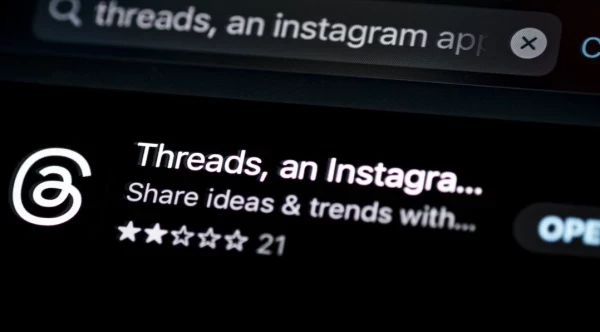Capitalizing On Email Marketing During The Holiday Season
A Psychological and Data-Driven Approach To Turning Content Into Revenue
Add bookmark
As B2B and B2C marketers continue to strategize throughout the busiest shopping month of the year, email marketing campaigns and weekly newsletters can be a powerful tool used to generate brand awareness, and convert click-through-rates to sales revenue.
In fact, 84% of consumers surveyed said they turn to their inboxes to find deals during the holidays, according to a new SubjectLine study.
But breaking through the holiday noise is a challenge for marketers and customer experience strategists, resulting in a higher number of unsubscribers during the month of December. 
More than half of the study’s respondents (58%) indicated brands offering relevant deals or coupons had a higher likelihood of converting. And half said that receiving relevant emails consistently creates a stronger feeling of connection to the brand, indicating that consistency does pay off — and should be maintained all year long in order to sustain subscribers and personalize customer experience.
Increasing conversion rates
Contrary to popular belief, the data suggests that there is a massive demand for promotional email marketing, despite the stigma of bothering customers and oversaturating their inboxes. Consumers are actually very receptive to email marketing (especially during the holidays)... if it’s the content they’re looking for, that is.
Read More: How the WSJ Designed Their Customer Experience Strategy
Nearly two-thirds (64%) of respondents indicated that they were most likely to open emails from brands during the holidays with content they are interested in seeing, which included deals or discounts (84%), holiday-themed content, such as gifts and décor (43%) and gift ideas and inspiration (39%).
More than half (56%) of respondents agreed that they are more likely to open emails featuring a limited-time sale or single-item coupons, highlighting the importance of consumer fomo. While product information and inspirational suggestions during the holiday season is important for marketers, conversion rates favor email content that offers customers discounts. In other words, consumers are checking their inboxes, searching for branded content that offers lower prices than they would typically find on another platform or during another season.
According to Jay Schwedelson, founder and creator of SubjectLine, “For B2C marketers, focus on what you want consumers to react to the most, make sure calls-to-action and offers are clear in marketing assets... B2B marketers can also capitalize on captive audiences during the holidays. Q4 is a great time to send ‘look ahead’ emails with rich content like whitepapers that speak to strategies for the coming year. In fact, these look ahead email campaigns can increase conversion rates as much as 40% over other quarters.”
Customer-centric content
Email campaigns during December are critical for brands looking to differentiate themselves from competitors, carrying a successful Q4 hangover into Q1. That’s if the message is seen.
Read More: A 3 Step Approach to Higher Employee Engagement Within The Contact Center
Customers won’t read email blasts conveying seasonal deals and limited-time offers that their expressing interest in if the content isn’t visually appealing. 
While social media marketing is exponentially evolving every month, many email marketing campaigns and newsletters use the same plain text practices in 2019 as 1999. Visual storytelling is a way for organizations to utilize creativity to not only get their message across and appeal to subscribers, but differentiate their brand on a reasonable dime.
The pyschology of visuals
So how can visuals impact consumer retention or decision through email templates? Jan Brascamp, assistant professor of psychology at Michigan State University, conducted a study to answer this question. What he found was that the visual cortex (the part of the brain that processes sight) can impact our decisions and perceptions without any help from the more “rational” areas of our mind associated with decision making. The cognition of the visual cortex begins the process that taps into consumers’ emotions and desires, not reasoning.
Think the hues in your email designs are merely for aesthetics? Think again. Business psychologists estimate that color can account for up to 60 percent of the acceptance or rejection of a product or service.
Choice of color in email content can also trigger an emotional response, with some tones improving moods over others. Blue, for instance, can evoke a sense of calmness and safety, while red can conjure a sense of urgency.
Like color and hues, images can play with readers’ emotions, pulling them in and compelling them to read text they might have skipped otherwise. The power of visuals is so strong that, when paired with relevant content, people can remember 65 percent of the information three days later, says molecular biologist John Medina in his book Brain Rules.
Incorporating testimonials
Member testimonials and brand reviews may seem like a warm and fuzzy component of an email blast or newsletter, but they have a vital purpose, too: 90% of consumers say online reviews impact buying decisions.
The reason? Social proof, a psychological and social phenomenon where people copy the actions of others because they perceive it as correct, to validate their purchase and make sure it’s worthwhile.
Read More: 5 Scientific Reasons Visual Storytelling Will Grow Your Brand
Combining the right contextual content, such as positive brand reviews and holiday discounts with commonly overlooked visual tactics like image and color design can not only improve immediate ROI on email marketing, but long-term sales revenue and profitability in 2020.




























